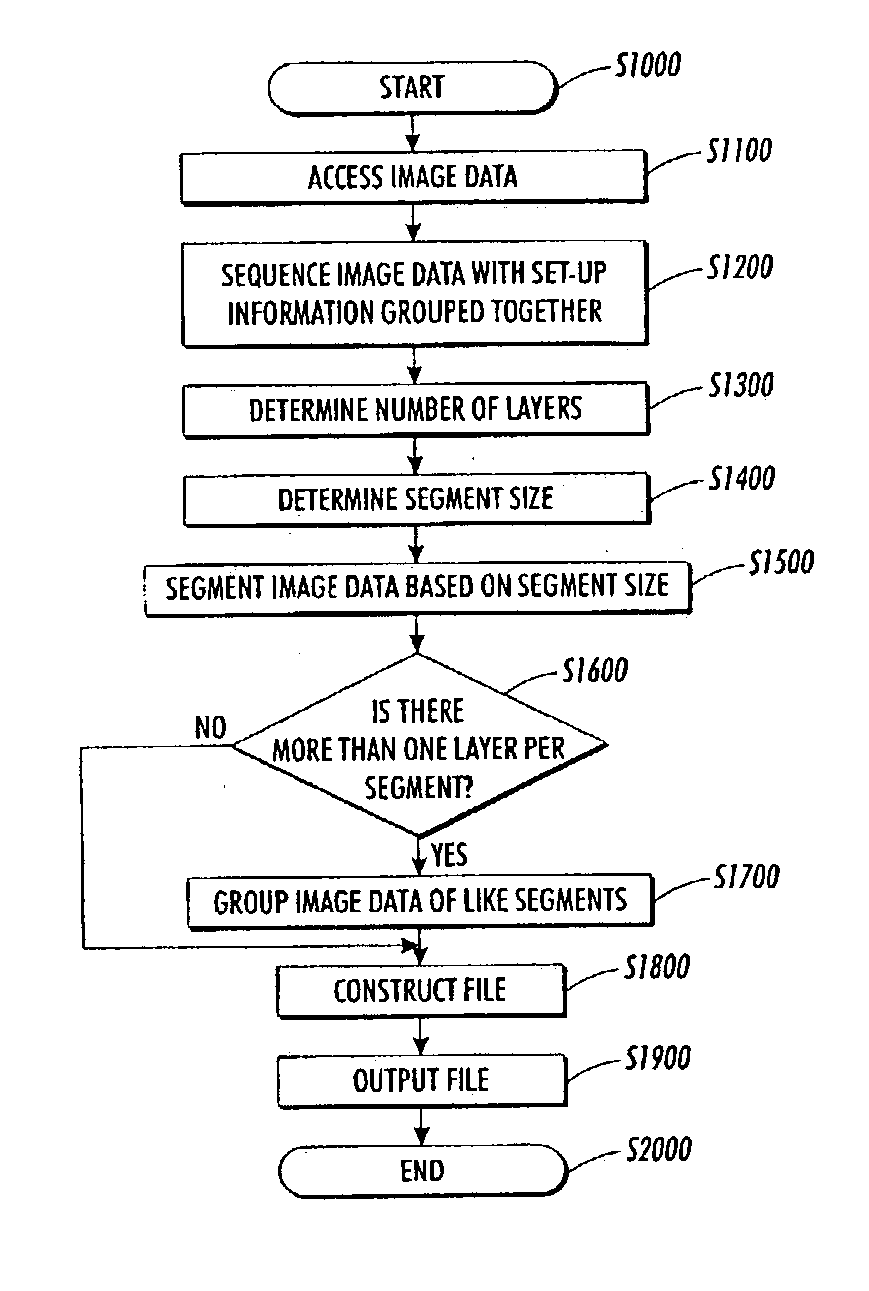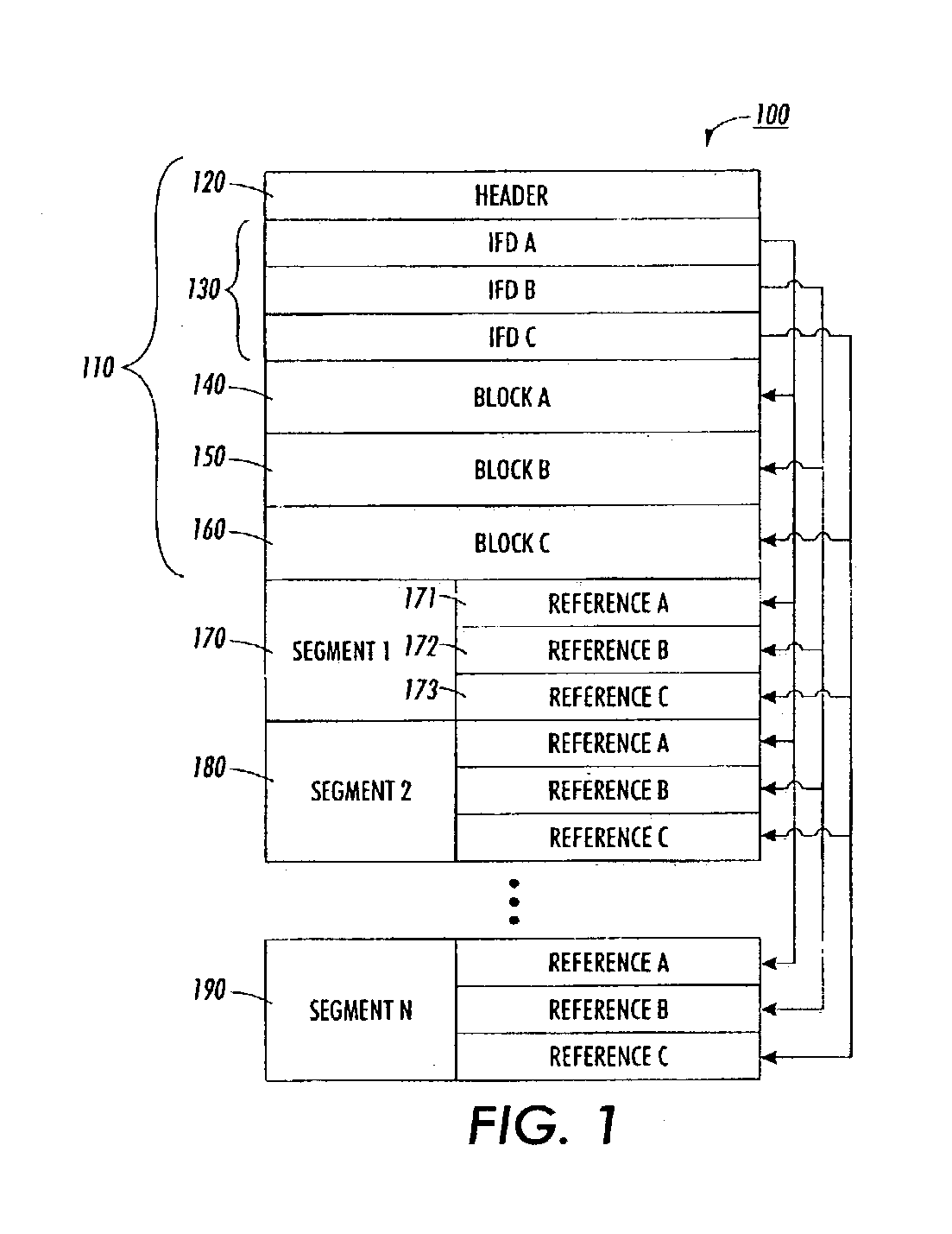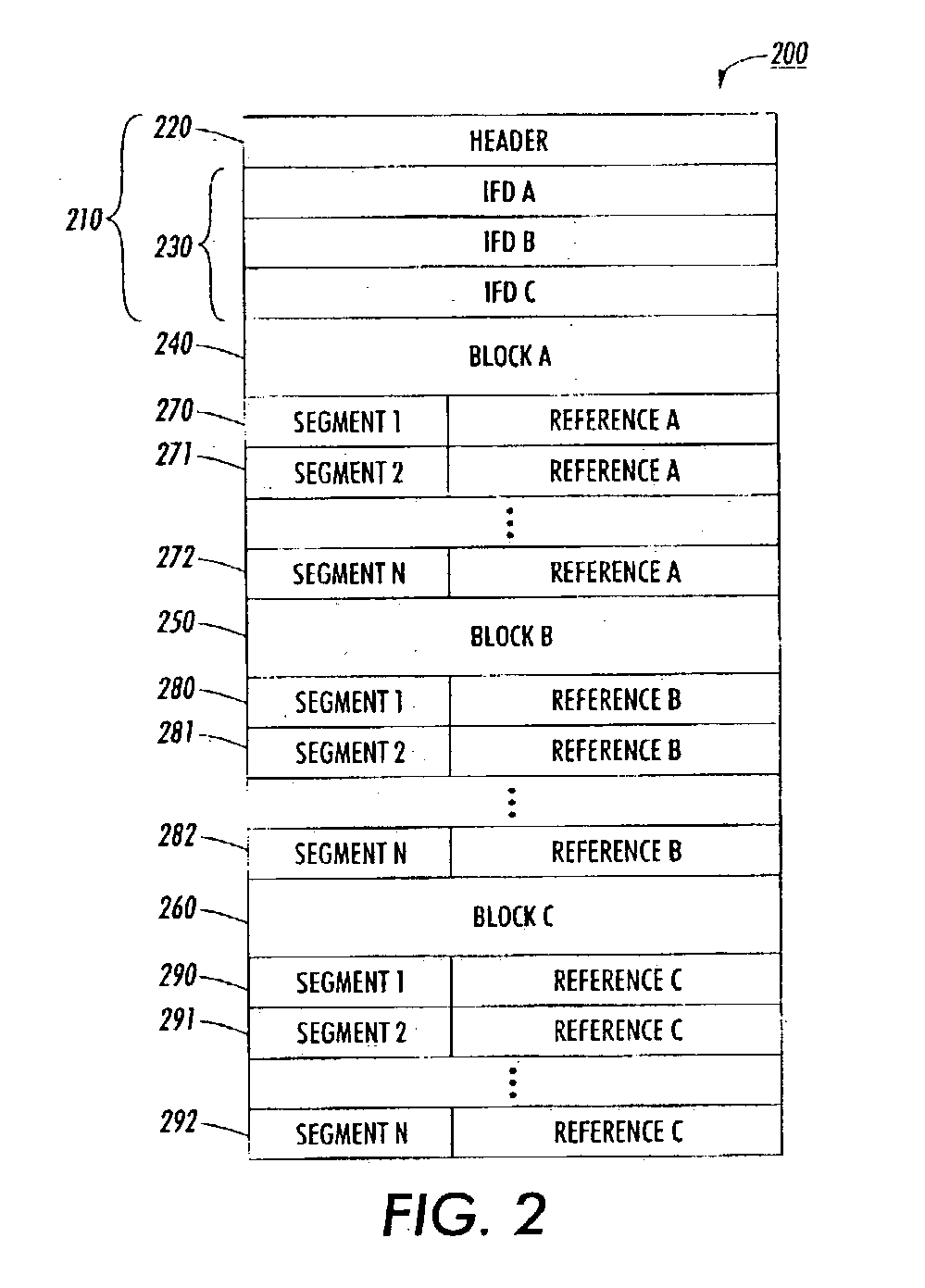Methods and systems for structuring a raster image file for parallel streaming rendering by multiple processors
- Summary
- Abstract
- Description
- Claims
- Application Information
AI Technical Summary
Problems solved by technology
Method used
Image
Examples
Embodiment Construction
[0018] A raster image data file structuring apparatus and method according to this invention enables better printing performance by segmenting a received image data file. This is done by, for example, accessing an image data file containing set-up information and image data, determining a structure of the image data, sequencing contents of the image data file such that the set-up information is grouped together and may precede the image data, segmenting the image data into a plurality of segments, and reconstructing the image data into an output image data file. The structure of the image data may include one or more layers.
[0019] FIG. 1 shows a first exemplary raster image file 100 structured in accordance with this invention. The raster image file 100 may be in any known or later developed format, such as TIFF (Tag Image File Format), JPEG (Joint Photograph Experts Group), or GIF (Graphics Interface Format), including any versions or modifications thereof. In this example, it is a...
PUM
 Login to View More
Login to View More Abstract
Description
Claims
Application Information
 Login to View More
Login to View More - R&D
- Intellectual Property
- Life Sciences
- Materials
- Tech Scout
- Unparalleled Data Quality
- Higher Quality Content
- 60% Fewer Hallucinations
Browse by: Latest US Patents, China's latest patents, Technical Efficacy Thesaurus, Application Domain, Technology Topic, Popular Technical Reports.
© 2025 PatSnap. All rights reserved.Legal|Privacy policy|Modern Slavery Act Transparency Statement|Sitemap|About US| Contact US: help@patsnap.com



